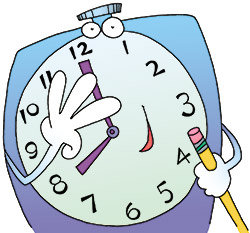Minilesson Print
Using Time-Order Transitions

By adding transition words or phrases between paragraphs and sentences, you can make your ideas easier to follow and understand.
Time-order transitions signal changes in time. You can include these words in your narrative or explanatory writing to show the order in which things happen. Anytime you are asked to describe an event or process in chronological (time) order, these words can help you.
Time-Order Transitions
about
after
all the while
as soon as
at
before
during
finally
first
just then
later
meanwhile
next
second
slowly
soon
suddenly
then
third
today
tomorrow
until
when
yesterday
Transitions also help your writing flow from one idea to the next. Notice how choppy a paragraph sounds without transitions and how much smoother it sounds when transitions are added.
Sample Paragraph Without Transitions
We had to build a frame for the floor of the house. We used a rope to raise all the wood up into the tree. We carefully nailed the board to the frame. We had a floor.
Sample Paragraph With TransitionsThe first thing we had to do was build a frame for the floor of the house. Then we used a rope to raise all the wood up into the tree. Afterward, we carefully nailed the board to the frame, and soon we had a floor.
Your Turn The following paragraph does not include transition words. Add time-order transitions to make the details in the paragraph easier to read and understand. Afterward, compare your revision with a classmate's.
Andre and I headed straight for the tallest and fastest water slide in the park. We reached it. We climbed five flights of stairs to the top. Andre said he would go first. He shot down the slide. It was my turn. I took a deep breath. The lifeguard gave me a nudge. Away I went.

Using Time-Order Transitions by Thoughtful Learning is licensed under a Creative Commons Attribution-NonCommercial-ShareAlike 4.0 International License.
Based on a work at k12.thoughtfullearning.com/minilesson/using-time-order-transitions.